The Firebird Trans Am
The Trans Am was first released in 1969 as a high-performance version of the Pontiac Firebird, which had been released two years earlier in 1967 to compete with pony cars like the Mustang, Camaro, and Cougar.
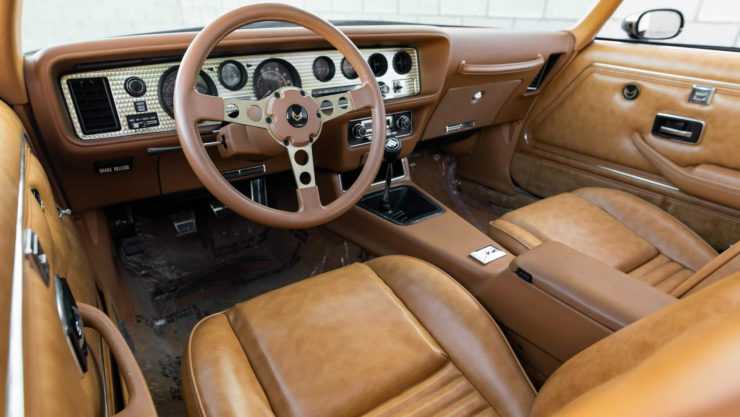
Both outside and in, this ’79 Trans Am is in time capsule condition, looking essentially identical to how it would have when it was first delivered over 40 years ago.
In order to turn a Firebird into a Trans Am, Pontiac would add a slew of upgrades to the suspension and drivetrain, with further changes to the bodykit and appearance.
Pontiac named the Trans Am after the Trans-American Sedan Championship, a new racing series developed by the SCCA starting in the year 1966. Despite the use of the name, the Pontiac Firebird Trans Am didn’t initially compete in the series as its smallest available engine was still too large for the 5.0 liter limit to qualify.
Trans Am – A 1970s Legend
The Trans Am would become an American cultural touchstone in the 1970s, thanks to both its wild looks and its performance. Unusually for a pony car of the era it handled well, so well in fact that it famously won the “Best Handling Car of 1979” award from Car and Driver, irking many imported European sports car manufacturers.
Pontiac would keep the Trans Am in production over four generations between 1969 and 2002. It was used as the Official Pace Car for the 1979 Daytona 500, the 1980 Indianapolis 500, and for the 1981 Daytona 500.
Today the Trans Am demands a premium over standard Firebirds, and the iconic 1970s and 1980s-era Trans Ams are becoming more and more collectible within the wider classic car community.
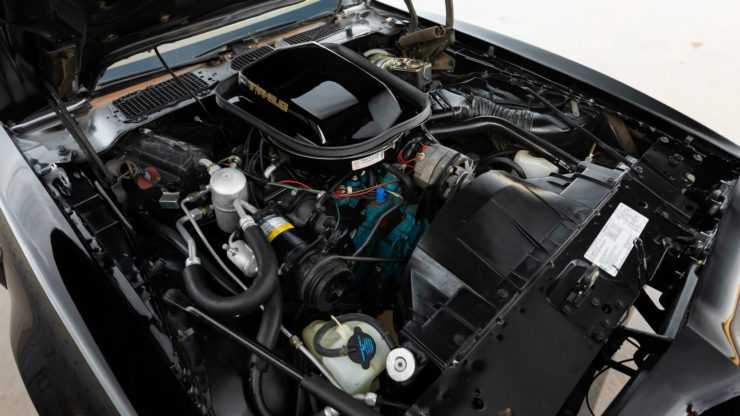
The 400 cubic inch (6.6 liter) Pontiac V8 was listed as being capable of 220 bhp, however period tests by the National Hot Rod Association showed that it was producing close to 260-280 net horsepower.
PONTIAC STRATO-STREAK
Even before the advent of emissions standards, the cost of designing a completely new engine was daunting. Design, development, testing, tooling, setting up supply chains — it’s a complicated process and the price tag for the whole enterprise rises quickly. It’s no surprise that most manufacturers share engines across as many models as possible (even across different brands) to spread those costs around.
We may take it as a sign of General Motors’ once vast wealth and market share, then, that until the late 1970s, GM’s individual automotive divisions designed and manufactured most of their own engines. There were occasional instances of one division using another’s engines, usually for low-volume applications — Pontiac bought a few Buick aluminum V8s for the 1961—1962 Tempest, and Oldsmobile purchased Buick’s Fireball V6 for some F-85s and Eighty-Eights — but those were the exception rather than the rule, and divisional leaders usually preferred to avoid such sharing.
That individuality combined with corporate policies limiting maximum displacement for different body styles to produce a multitude of different engines of very similar capacities and outputs. By 1969, for instance, Buick, Chevrolet, Oldsmobile, and Pontiac each offered a 350 cu. in. (5.7 L) engine of distinctly different design. Since each division’s output topped that of some rivals’ entire corporations, we assume it seemed an acceptable indulgence.
While Chevrolet and Buick each had distinct small-block and big-block V8 engine lines, Pontiac really had only one. Pontiac’s “Strato-Streak” V8 had bowed for 1955, replacing the division’s hoary flathead engines, which dated back to the 1930s. It had certain features in common with the contemporary small-block Chevy, such as rocker arms pivoting on studded ball joints rather than rocker shafts (a feature that had actually been developed by Pontiac engineers and shared with Chevrolet), but it had some significant internal differences. It was also somewhat bigger and heavier than the Chevrolet engine, with greater growth potential.
Grow the Strato-Streak did — from 287 cubic inches (4,706 cc) in 1955 to 455 cu. in. (7,481 cc) in 1970. Over the years, it was offered in a bewildering number of states of tune. Fuel-injected, it had powered the first Bonneville, Bunkie Knudsen’s declaration of intent that Pontiac was no longer grandma’s car. In highly tuned 421 cu. in. (6,902 cc) Super Duty form, it had been a formidable competitor on both drag strip and NASCAR oval. In 389 cu. in. (6,372 cc) form, it had made the reputation of the class-defining GTO, progenitor of the sixties muscle car.
The Pontiac V8 was a sturdy engine with considerable power potential, but it was on the porky side, particularly in its small-displacement versions. The 350 was a good 70 pounds (32 kg) heavier than a Chevrolet 350 and more than 100 pounds (46 kg) heavier than the Ford 302 cu. in. (4,942 cc) V8, which had adverse effects on weight distribution and fuel economy, particularly for smaller cars.
Perhaps the most famous Pontiac V8: the 389 Tri-Power, seen here in a GTO. By the time it was dropped in 1966, the Tri-Power 389 was rated 360 gross horsepower (269 kW) with three Rochester 2GC two-throat carburetors. Not only is it powerful, the roar it makes when the front and rear carbs cut in is truly something to hear. It was dropped after 1966 to comply with corporate rules banning multiple-carburetor engines on all GM vehicles, except for the Corvair and Corvette.
THE LAST OF THE INDEPENDENTS
A crisp, futuristic new Pontiac Firebird bowed the following year, a body style that shortly would be immortalized as KITT of the TV series Knight Rider, but the turbo engine did not return, nor did the 301. Turbocharging had earned the Pontiac V8 a temporary reprieve, but GM management finally made the difficult decision to standardize engines across most of the company (save for Cadillac). Pontiac would continue to build the 151 cu. in. (2,471 cc) Iron Duke (expanded need for which was actually the main reason for canceling the 301, which shared some of the same tooling), but future Pontiacs would now have small-block Chevrolet V8s.
From an economic or logical standpoint it’s difficult to argue with GM’s adoption of “corporate” engines, but it was yet another blow to the identity of the individual divisions. By then, there was little to choose between Chevrolet, Pontiac, Oldsmobile, and Buick other than styling and standard equipment. The loss of distinction was openly mocked in the advertising of some rival automakers and, combined with a litany of embarrassing quality problems and recalls, did lasting damage to GM’s formerly unassailable market position.
The 301 and the Turbo T/A have gotten a bad rap over the years. Some hot-rodders consider it a hopeless case, and it still has a reputation for unreliability, although well-kept examples have lived long and relatively healthy lives even with more-than-standard power. For many enthusiasts, the Turbo T/A is at best a curiosity, never enjoying the cult status of the later Buick Grand National and GNX turbo cars.
Nonetheless, the 301 has its partisans. Fans will tell you that the 301T is unfairly derided — if it was not without its problems, the same was also true of most contemporary turbo engines — and much can be done with it given an appropriate degree of mechanical sympathy. More important, the Trans Am Turbo was the last scion of a proud lineage stretching back to the days of Bunkie Knudsen, Pete Estes, and John DeLorean — the last real Pontiac V8, and, by some standards, the last of the real Pontiacs.
FIN
SMOKEY’S FIREBIRD
Among the models to receive the 301 and later the 265 was the Pontiac Firebird. The original Pontiac Firebird, introduced in 1967, was Pontiac’s version of the Chevrolet Camaro, sharing the same corporate F-body. Like the Camaro, the Firebird had been completely redesigned midway through the 1970 model year.
Mechanically, the second-gen Firebird was much the same as before, but it had a sleek new body, the work of designers Jack Humbert and Bill Porter and modeler Jerry Snyder, which many contemporary reviewers thought would befit a Ferrari or Maserati. The new car was available in modest base trim with your choice of 250 cu. in. (4,095 cc) Chevrolet six or 350 cu. in. (5,798 cc) Pontiac V-8, but you could order as much tinsel and as much performance as your wallet and insurance agent could stand. Top of the line was the Pontiac Firebird Trans Am, a model introduced on a very limited basis in 1969, which debuted with a name licensed from the SCCA (of which “Trans Am” remains a registered trademark); a standard 400 cu. in. (6,554 cc) engine with 345 gross horsepower (257 kW); and a conspicuous array of scoops, extractor vents, and spoilers.
Despite the racy looks, the new Firebird arrived just as pony car sales were crashing. GM came very close to canceling it after 1972, but the Firebird and its Chevrolet Camaro cousin earned a last-minute reprieve. By mid-decade, sales had recovered nicely, thanks in no small part to the Trans Am’s starring role in the 1977 Burt Reynolds action-comedy Smokey and the Bandit. Total Firebird sales reached 187,285 for 1978, about half of those Trans Ams.
Pontiac Firebird Trans Am Turbo Pace Car replicas were available only in Cameo White with gray trim. Despite detail changes — urethane 5 mph (8 km/h) bumpers for 1974, rectangular sealed-beam quad headlights for 1977 — the 1980-81 Trans Am is the same basic shape as the 1970½ model, riding the same 108-inch (2,743mm) wheelbase. It’s about 196.8 inches (4,987 mm) long and tips the scales at almost 3,600 lb (1,633 kg).
The Firebird’s 1970½ body would survive through 1981 with only modest stylistic changes, including a set of well-integrated 5 mph (8 km/h) bumpers (mandated by federal law) that made it one of the few cars of its era NOT to look like it was wearing battering rams. More noticeable was the flashy Firebird hood decal (introduced in 1973), which was quickly dubbed — not always affectionately — the “screaming chicken.”
Under the hood, the screaming had become a good deal more muted. The Firebird and Firebird Trans Am had been some of the last bastions of genuine muscle car power — the very rare 1973-1974 Super Duty 455 was no less formidable than the meanest of its pre-smog rivals — but by 1976, the combination of emissions requirements, prohibitive insurance rates, and reduced compression had blunted the Firebird’s talons.
The 455 cu. in. (7,488 cc) engine was available through 1976, but by then, it was down to 200 net horsepower (149 kW), respectable for the time, but almost shameful for such an enormous engine. When the 455 was gone, the top option was the 400, which now had only 180 net horsepower (134 kW) and 325 lb-ft (439 N-m) of torque). That was up to 200 hp (149 W) for 1978 — 220 hp (164 kW) for the optional W72 engine available on 49-state cars — but cars bound for California, which had stricter emissions standards, were limited to the Oldsmobile 403 cu. in. (6,598 cc) V8, offering 185 hp (138 kW) and 320 lb-ft (432 N-m) of torque.
Although a well-equipped Trans Am now weighed more than 3,600 pounds (1,635 kg), performance remained fairly strong. A non-California four-speed car could reach 60 mph (97 km/h) in less than 7 seconds and run the quarter mile (402 meters) in the low 15s, excellent for the late seventies, and with the right axle ratio was among the fastest cars of its time. Compared to the hottest Supercars of 1970, the latter-day Firebird was strictly lukewarm, but robust sales suggested that disco-era buyers valued the image as much as the actual performance. There was also some consolation in the fact that a properly equipped Trans Am was among the best-handling production cars of the seventies.
The little sticker under this 1980 Pontiac Firebird Trans Am’s “Trans Am” decal says “Indianapolis Motor Speedway,” identifying this as one of 5,700 replicas of the 1980 Indy 500 pace car. These fully equipped limited editions went for $11,194. The extractor side scoop was a Pontiac Trans Am feature going back to the debut of the second-gen Firebird in 1970.
PONTIAC FIREBIRD TRANS AM TURBO
The words “Firebird Trans Am Turbo” would seem to connote furious performance, but the Turbo T/A was not as speedy as one might expect. Early tests by Car and Driver and Motor Trend (October and November 1979 respectively) recorded 0-60 mph (0-97 km/h) times of around 8 seconds, quarter-mile (402-meter) ETs in the mid-16s, and a top speed of 116 mph (187 km/h), which was by no means bad for 1980, but significantly slower than the outgoing 400 cu. in. (6,554 cc) Firebird. More worrisome were highly inconsistent independent test results with ETs varying by as much as a full second from car to car, combined with reports of preignition (knock) in acceleration runs despite all of Pontiac’s precautions. The automatic-only Trans Am Turbo could also be outrun by a manually shifted Camaro Z28 despite the Pontiac’s nominal 20 hp (15 kW) advantage. (Firebird Formula Turbos, which weighed slightly less, were a bit quicker than the Trans Am, but probably not by much.)
Still, the Trans Am Turbo provided fine performance for a modest price — a well-equipped example could be had for less than $10,000, thousands less than a Corvette, Datsun 280ZX Turbo, or Triumph TR8. The Firebird was if anything more agile than ever, aided by less weight on the nose, and the optional four-wheel disc brakes provided excellent stopping power.
Good-looking white-painted “Turbo” wheels (RPO N89) were originally offered only on turbocharged cars and Pace Car replicas, but the option was later extended to the whole line. With the WS6 handling package (standard on Pace Car replicas), which included four-wheel disc brakes, the Trans Am had fine handling and brakes. Ride quality on rough roads was mediocre, hurt by high unsprung weight, limited wheel travel, and stiff shocks and springs.
The ultimate Trans Am Turbo was the 1980 Indianapolis 500 Pace Car replica. There were originally supposed to be 6,300 of these (eventually cut to 5,700). A Pace Car replica was essentially a Trans Am with the turbo engine and every available Firebird option, including a T-top roof, air conditioning, limited-slip differential, white-painted alloy wheels, a full load of convenience features, and the WS6 Performance Handling Package (which included four-wheel disc brakes and stiffer suspension components). Pace Car replicas were available only in Cameo White with gray accents and a unique hood decal even more dramatic than the normal Firebird’s.
The Pace Car carried a daunting $11,194 sticker price, compared to the $7,529 base price of a normal Trans Am with the turbo engine. The Pace Car replica wasn’t available in California, again because the turbo engine failed to meet California emissions standards. (Our photo car must have originally been registered in another state.)
The Pace Car was the gaudiest example of a car that was fast becoming a dinosaur. The Firebird still looked good, but for all its considerable bulk, it remained cramped inside, hard to see out of, and thoroughly impractical. When the 1979 Iranian revolution soured the U.S. economy and reignited worries about fuel shortages, Firebird sales dropped precipitously, falling from more than 210,000 in 1979 to 107,340 for 1980; 23,421 of those had the turbo engine.
The 1970½ body style returned one last time for 1981. The 301T was again optional for non-California cars, now with electronic engine management (in this case amounting mostly to electronic mixture controls for the carburetor) and a net output of 200 horsepower (149 kW) and 340 lb-ft (459 N-m) of torque. There was a Daytona 500 Pace Car replica package much like the previous year’s Indy edition. Total sales (for all Firebird models) fell to 61,460, a decline of more than 40%.
The trailing edge of the Firebird Trans Am Turbo’s hood bulge contains this rudimentary “boost indicator”: three lights that illuminated in sequence as the turbocharger’s boost pressure rose. It was a gimmick — a real pressure gauge would’ve been more useful — but it is very flashy. This indicator was standard on Pace Cars and optionally available on other 1980 turbo cars (RPO UR4), although it was rare. It became standard equipment on turbo cars for 1981.
The 1979 Pontiac Trans Am T/A 6.6 Shown Here
The car you see here is almost certainly the lowest mileage and most original 1979 Pontiac Trans Am T/A 6.6 in the world. It has just 110 miles on the odometer and as mentioned in the introduction, the carpets are still covered with protective plastic from the factory.
The 1979 T/A 6.6 was only available with the Borg-Warner Super T-10 4-speed manual transmission and the WS6 Handling Package. These features combined made the car one of the best handling Trans Ams up until that point in history.
This car is also accompanied by its original purchasing documents, a copy of the MSO, the original window sticker, the owner’s manual and sun visor sleeve, a 1979 Pontiac dealer brochure, GM license plate bracket, warranty brochure, and even the Delco radio manual.
Mecum will be offering this car at their Glendale Auction in mid-March, at the time of writing there’s no price guide listed, and you can click here if you’d like to read more about the car or register to bid.
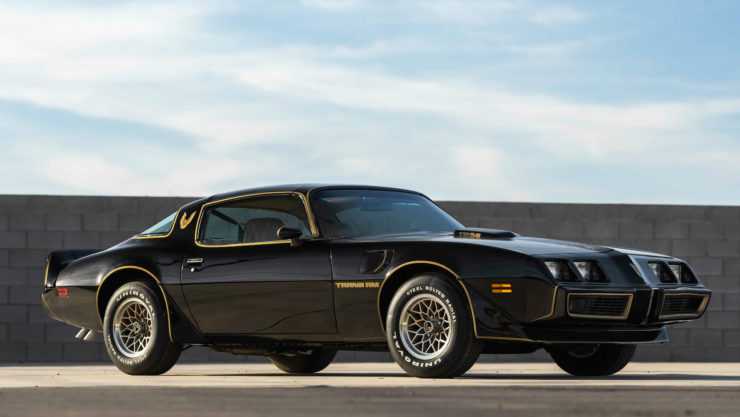
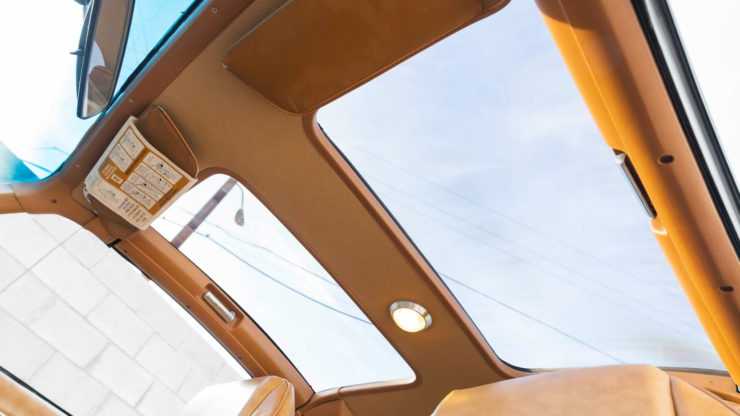
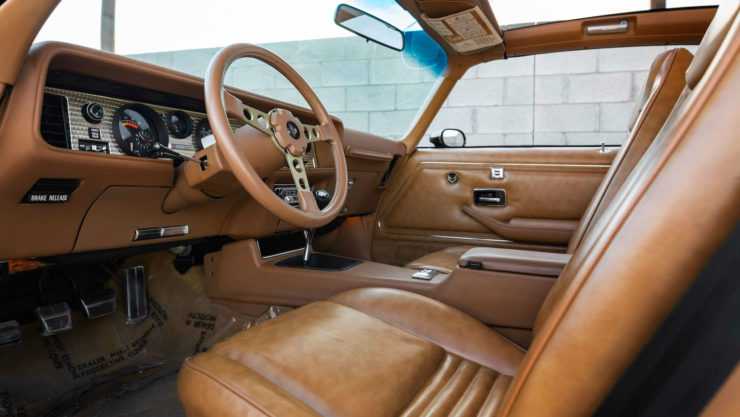



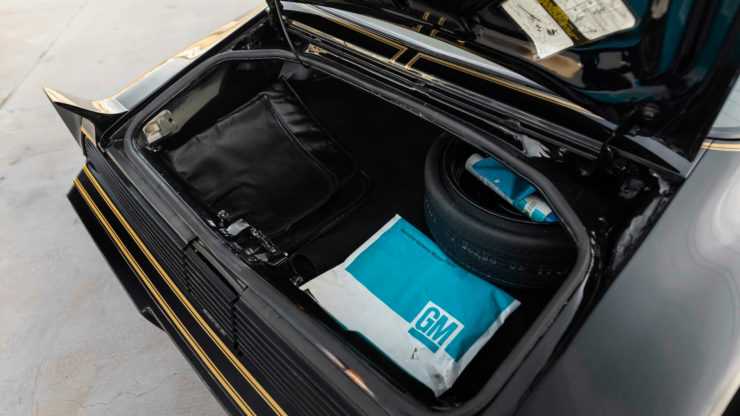
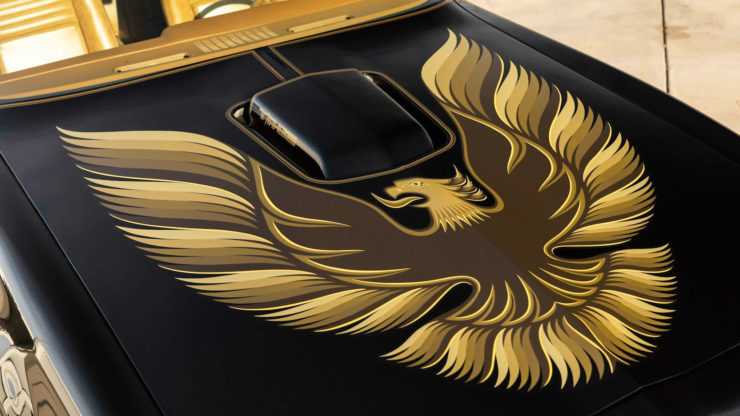

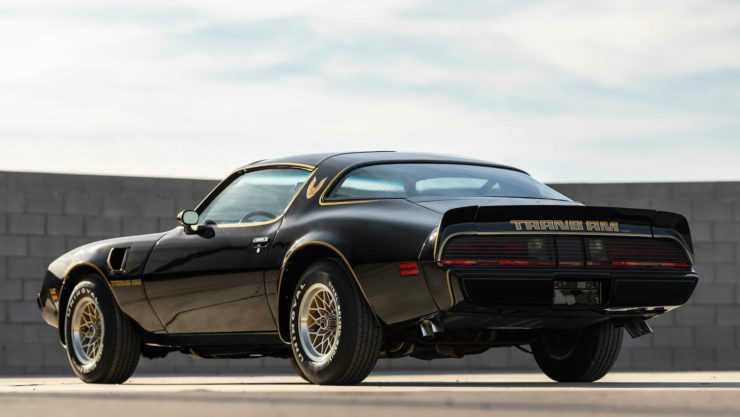

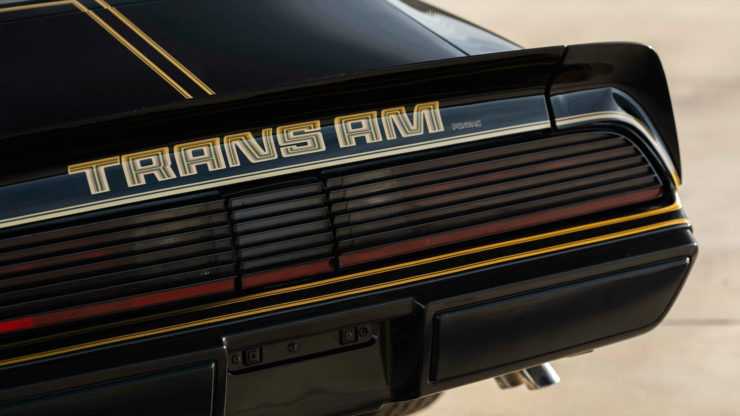
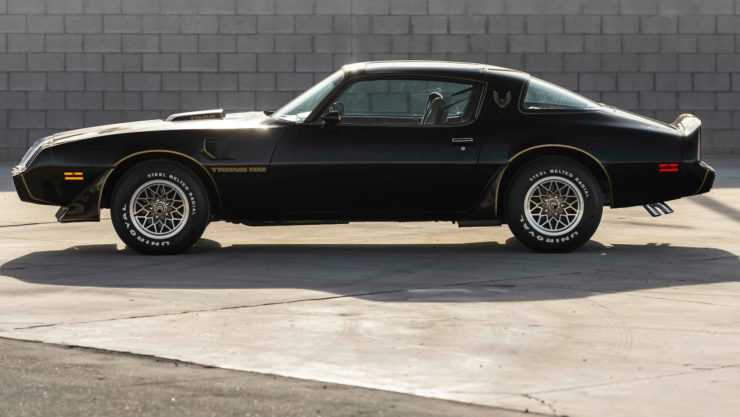
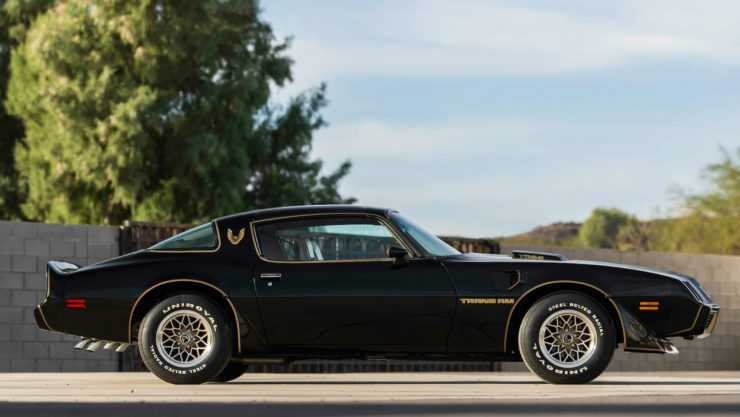
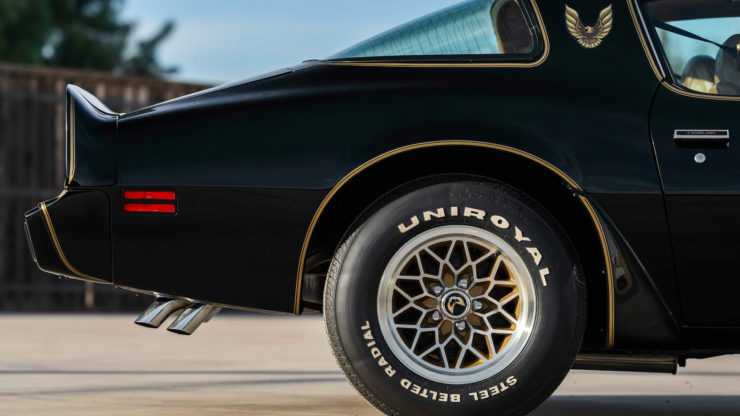



Images courtesy of Mecum
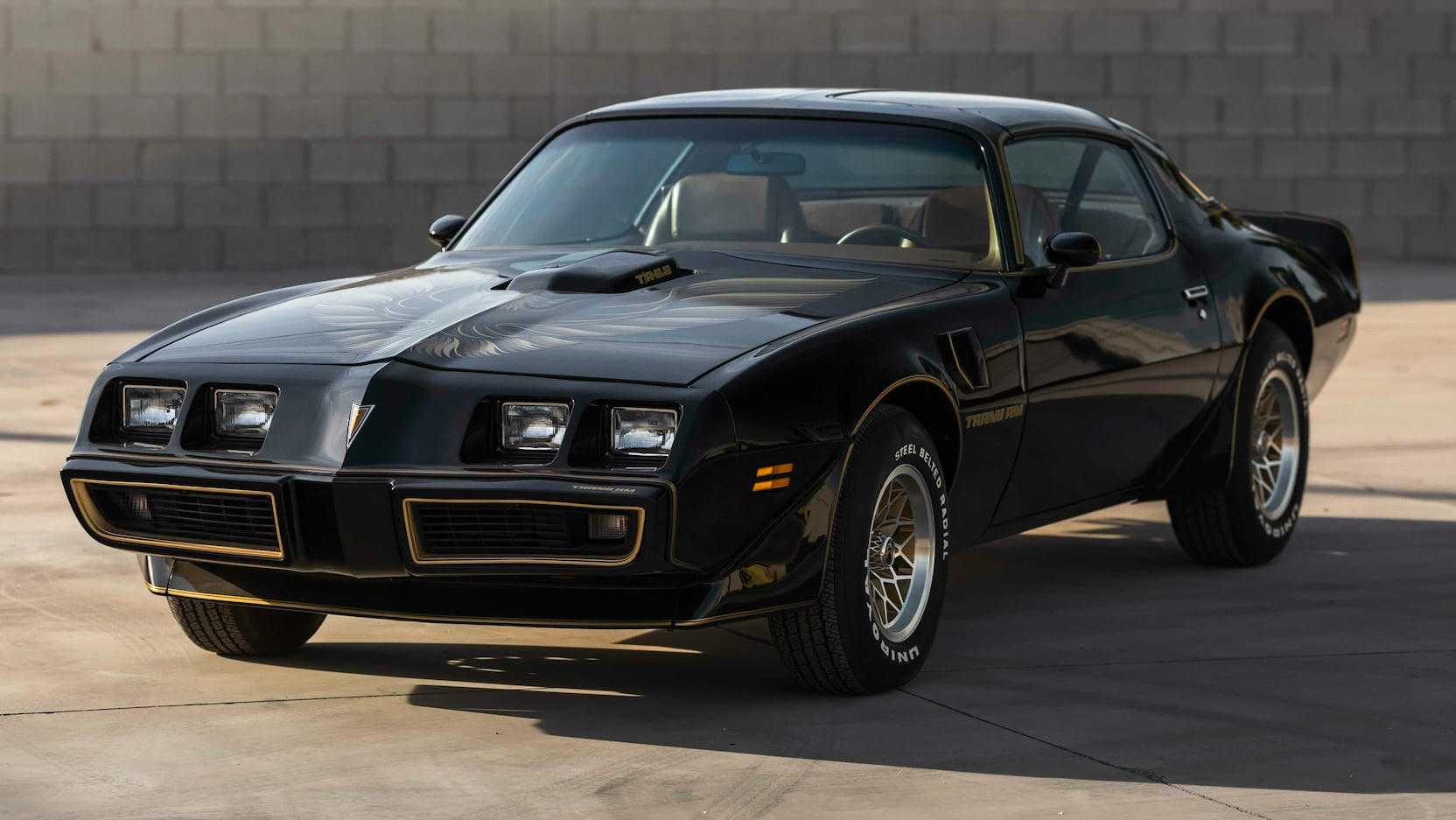
Fast Facts – The 1979 Pontiac Trans Am T/A 6.6
- The 1979 Pontiac Trans Am T/A 6.6 is a car that was almost never made, it owes its existence to a decision to stockpile the high-performance 400 cubic inch Pontiac V8 after it was discontinued in 1978.
- The Trans Am was a special higher-performance version of the Pontiac Firebird that first appeared in 1969. The Firebird had been developed to challenge the likes of the Ford Mustang and the Chevrolet Camaro.
- The “Trans Am” name comes from the racing series by the same name created by the SCCA in 1966, the original name was the “Trans-American Sedan Championship.” Races were held across America, in Canada, and in Mexico.
- The 1979 Pontiac Trans Am T/A 6.6 is powered by a 400 cubic inch (6.6) liter Pontiac V8 producing a claimed 220 bhp at 4,000 rpm and 320 lb ft of torque at 2,800 rpm. It was hailed for its handling and performance ability, and it remains a highly desirable late-70s muscle car.
PONTIAC 301 TURBO
Over at Buick, there had recently been a revival of an item GM had pioneered for passenger car use a decade earlier (on the Chevrolet Corvair Monza Spyder and Oldsmobile F-85 Jetfire) and then abandoned: the exhaust-driven supercharger, or turbocharger. Buick’s pace car for the 1976 Indianapolis 500 sported a turbocharged version of the Buick V6 and a production version had followed for 1978. The turbo V6 made up to 165 hp (123 kW), as much as many GM V8s of that era, but returned much better fuel economy, at least for EPA and CAFE purposes. With even stricter emissions and fuel economy standards set to arrive in the eighties, that approach seemed like the way of the future.
Around the time the Buick turbo V6 debuted, Pontiac was experimenting with a turbocharged version of the new 151 cu. in. (2,471 cc) “Iron Duke” four (which was related to the 301), capable of around 125 net horsepower (93 kW). There were also persistent rumors in the automotive press that Pontiac might get the new turbocharged Buick engine. Neither came to fruition (at least not immediately — Pontiac did briefly get the Buick turbo in 1989), but around the end of 1978, Pontiac announced that they were preparing a new turbocharged version of the 301.
The turbocharged engine actually began as a student project, conceived and executed by automotive engineering students at the General Motors Institute (GMI) in Flint (now Kettering University) for an interscholastic contest. Their professor, Jim Lyons, later presented the students’ entry — a low-emissions turbocharged conversion of a Firebird 350 — to Pontiac chief engine engineer Leo Hilke as a production possibility.
The Pontiac Trans Am Turbo was not nearly as fast as it looked, although it was quick by the standards of its time. The tail spoiler was at least mildly functional — testers found Trans Ams far more stable at 100 mph (160 km/h) speeds than were Firebirds without the aero addenda.
Since Pontiac’s 350 cu. in. (5,798 cc) V8 had been discontinued by then, Pontiac instead developed a turbo installation for the 301, using a single Garrett AiResearch TBO-305 draw-through turbocharger with a nominal maximum boost of 9 psi (0.6 bar). Since the light-duty 301 hadn’t been designed with this sort of duty in mind, Pontiac engineers added a higher-capacity oil pump and restored some of the beef that had been trimmed from the normally aspirated 301, making the 301T somewhat stronger and heavier than the standard 301. To limit detonation and allow the use of regular unleaded gasoline, compression ratio was reduced to 7.6:1, the Rochester Quadrajet four-barrel carburetor was modified to provide automatic under-boost enrichment, and a Delco Electronic Spark unit (shared with the Buick turbo V6 and normally aspirated 1980–1981 301 four-barrel engines) was added to retard engine timing under load. A taller bulged hood was required to make room for the turbocharger housing.
The turbocharged 301 went into production for the 1980 model year, replacing both the Pontiac 400 and Oldsmobile 403. In its initial production form, the 301T was at least nominally more powerful than either, claiming 210 net horsepower (157 kW) and 345 lb-ft (467 N-m) of torque, a healthy increase over the 155 hp (116 kW) and 240 lb-ft (324 N-m) of the normally aspirated four-barrel 301. The turbo package (listed on the order form as RPO LU8) was offered only with automatic transmission and a 3.08 axle and cost a reasonable $350 on Trans Ams and $530 on Formulas. The turbocharged engine met federal emissions standards, but wasn’t available in California, although some were assembled there.





















